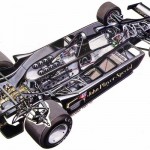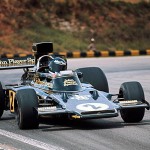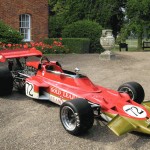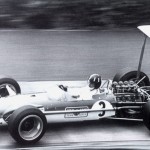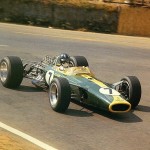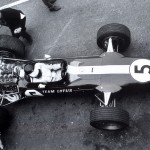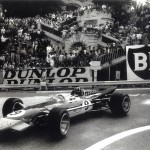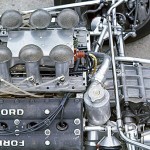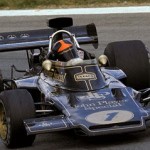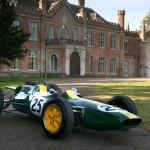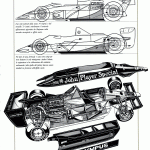Your Top Five: Lotus Grand Prix cars
Here’s my take on the top five Lotus Grand Prix cars. Choosing five wasn’t that difficult, putting them in any sort of order? Impossible as far as I’m concerned!!
Colin Chapman has always been portrayed as the great innovator and these cars certainly changed GP car design forever, but many of these innovations had been tried before, either by other car designers, or by other industries. What Chapman and Lotus did was to make them work.
Lotus 25
Introduced the monocoque chassis rendering the agricultural spaceframe obsolete. Completely dominated GP in 1963.
Lotus 49
Used the new Cosworth DFV engine as a stressed member (ie part of the chassis). A designer like Chapman, with such an eye for detail, couldn’t be doing with having to add an engine carrying sub-frame to the back of his beloved monocoque chassis.
Lotus 72
The car that saw an end to the classic “cigar shaped” GP car of the 60’s. Side mounted radiators = better weight distribution and the wedge shape body was about the first to be properly integrated with the wings.
Lotus 78
Until 1977, car designers largely either ignored how the car’s bodywork acted in the areas that couldn’t be seen (like the underside), or tried to stop as much air as possible from flowing under the car. The 78 used this air (via the Venturi principle) to actually create downforce.
Lotus 79
The way that the angular 78 used the airflow to create downforce was a little crude, but the “Black Beauty” type 79 was to race car design what the Mona Lisa is to the art world, aesthetic perfection.
No other single designer or constructor has had as much influence on modern race car design. For many years now all Formula 1 cars have had moncoque chassis with the engine and gearbox as stressed members, side mounted radiators with bodywork designed to incorporate wings and ground effect aerodynamics. That is Colin Chapman’s lasting legacy.
Mel Turbutt



